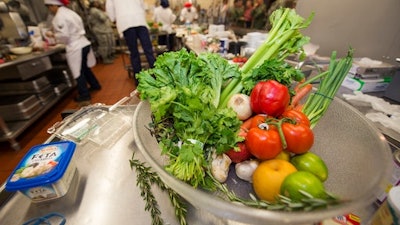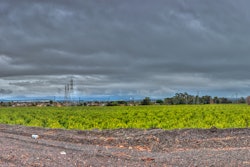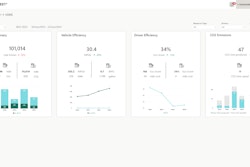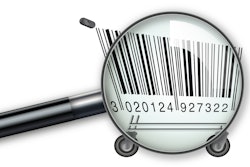
Waste in the food industry is pervasive across all levels, from production and distribution to retailers and consumers. EPA data shows food waste is the single most common material sent to landfills in the United States with the average restaurant producing 100,000 pounds of waste each year, two-thirds of which is food waste.
Rapid advancements in technology have revolutionized the food industry from farm to fork, including breakthroughs in efficiency for how food is grown, processed, distributed and consumed. Those same technologies, such as artificial intelligence (AI), machine learning, blockchain, and waste metering, can also be leveraged to dramatically improve how food waste is managed. Research shows that for every $1 companies invest into reducing food waste, they save $14 in operating costs.
Harnessing the power of technology and data analytics can significantly contribute to the reduction of food waste and increase landfill diversion rates. By leveraging technology, data can be collected and analyzed across the entire supply chain, from production through waste disposal. These data-driven insights help optimize processes, identify cost-saving opportunities and drive continuous improvement initiatives. With advanced analytics, businesses can implement targeted waste reduction strategies and measure their effectiveness over time.
1. Streamline supply chains through real-time monitoring and tracking
Technology allows for real-time monitoring and tracking of products throughout their lifecycle. Businesses can collect data on critical factors such as temperature, humidity, and location, ensuring products are stored and transported under optimal conditions. By implementing real-time monitoring, businesses can prevent spoilage, minimize the chances of disposal due to compromised quality, and make informed decisions regarding inventory management.
With blockchain technology, it’s easier than ever to follow food from producers to consumers. Blockchain-backed Internet of Things (IoT) devices coupled with machine learning can verify information about the origin of food. It also helps automate farming operations and allows distributors to track food in real time. This technology provides an avenue for producers to go beyond labels such as “sustainable” or “natural” because of the in-depth data they offer, proving the origins and methods of food production. Smart tools that allow businesses to track food across an entire supply chain also help identify waste pain points and inefficiencies in operations.
2. Cost-effective and precise forecasting through data-driven inventory management
Data-driven insights as a result of smart technology tools have the power to provide the food industry with accurate, up-to-date information for optimized inventory management. Integrating technology and data analytics means optimization algorithms can take into account lead times, shelf life, demand variabilities, and historical trends to determine the best inventory volumes for businesses. This intersection helps strike a balance between the costs of inventory, meeting the demands of customers, and minimizing waste.
These tools have the power to result in minimizing overstocking and waste and have the potential to unlock significant cost savings for businesses.
3. Landfill diversion opportunities through waste metering technology
Waste metering, or dumpster monitoring, is another smart technology tool that plays a crucial role in efficient, optimized waste management. Through deploying cameras, sensors, and AI-enabled devices in waste receptacles, businesses can collect data on waste generation, fill levels, and disposal frequency. This technology provides businesses with valuable information about waste accumulation that are able to drive proactive waste management strategies.
In the food and beverage industry, this tool allows businesses to measure and track the quantity of food waste across various stages of the supply chain and operations. Quantifying the scale of waste allows a clear understanding of the scope of the issue and identifies areas where waste is being generated. These smart metering solutions allow for measurement and analysis of food waste at the point of disposal to make sure that food is actually being diverted from landfills and also to inform how to reduce the production of food waste overall.
Utilizing waste metering technology allows the food and beverage industry to identify opportunities in which organic waste can be diverted from the landfill. Collection operations can be optimized, overflows can be reduced, and greater efficiency can be achieved that in turn are able to drive cost-savings and associated greenhouse gas emissions reductions.
Conclusion
Tracking and monitoring food waste more effectively creates a significant opportunity for the food and beverage industry. Through leveraging waste tracking systems, employing data analytics, and other smart technology, businesses can optimize processes to better manage supply chains, reduce waste, and marry sustainability to profitability.
Ultimately, the adoption of innovative technologies and collaboration with dedicated waste service providers specializing in waste and recycling strategy can accelerate the path toward a more waste-conscious future for the food industry.

















